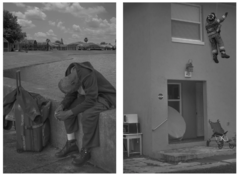totò618
Member
- Joined
- Feb 2, 2012
- Messages
- 9
- Format
- 35mm
Hello,
what do you think is the best film + developer combination to achieve a low contrast negative rich in midtones?
For 120 and 4x5 film especially. Keep in mind I won't be scanning the negatives but printing in the darkroom.
I attached an 8x10 photograph by Joshua Lutz.
Thank you.
what do you think is the best film + developer combination to achieve a low contrast negative rich in midtones?
For 120 and 4x5 film especially. Keep in mind I won't be scanning the negatives but printing in the darkroom.
I attached an 8x10 photograph by Joshua Lutz.
Thank you.













